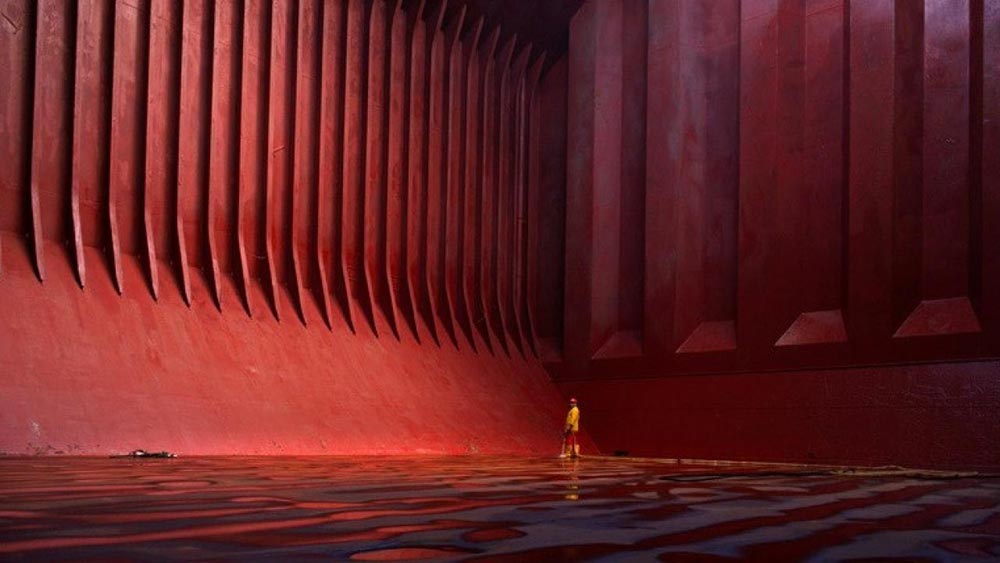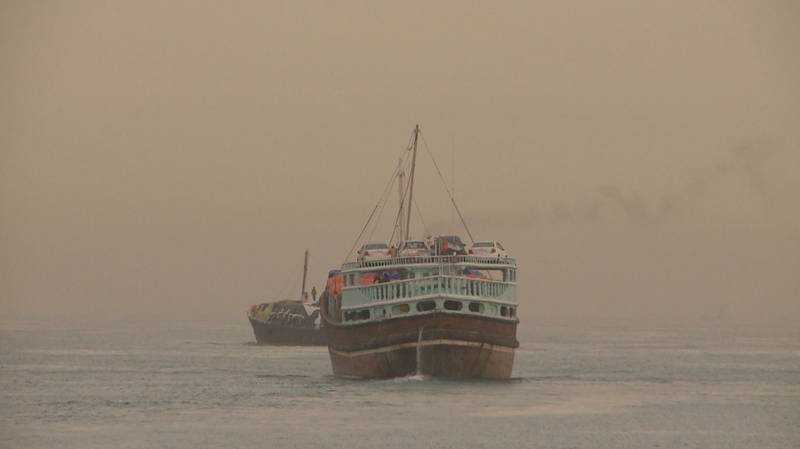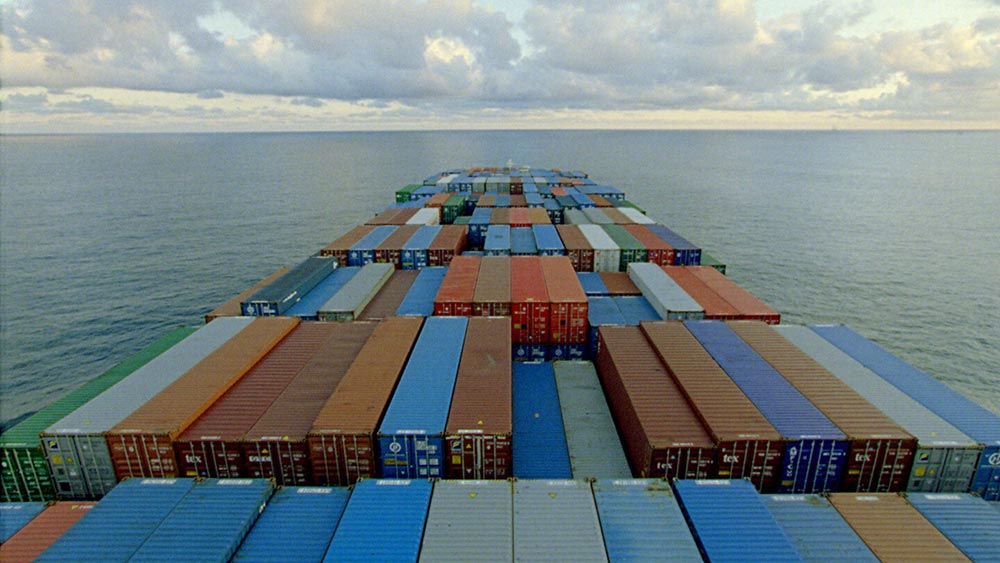In the 1960s, New York City’s ports faced obsoletion. Once considered the foundation of the city’s prosperity, the twentieth century brought them troublesome changes. A port’s success increasingly relied on its ability to seamlessly integrate with other transportation infrastructure that would carry cargo inland. With locations hostile to trains—which were forced to float freight across the harbor—as well as trucks—which were inevitably ensnared in a congestion vortex—ports throughout Manhattan and Brooklyn lost their competitive edge. But, buttressed by government regulations, the ports held on until the arrival of an indomitable foe: the container. Those big, metal, cost-cutting boxes that revolutionized global trade could only be accommodated via purpose-built terminals, which were spread over hundreds of open acres of land that exurban New Jersey had in abundance, but New York did not.
Yet, something happening in Brooklyn this July cracks a fissure in this history. In defiance of the economic trajectory that swept port industry across the river, Spectacle’s “Heavy Metal Containers” series is bringing containers to New York. Unlike their physical counterparts, these 2D projected containers deliver not cheap, intermediate goods, but rather a searching and anxious inquiry into the aesthetics of globalized capitalism.
Allan Sekula and Noël Burch’s The Forgotten Space (2010, pictured at top) is a perfect entry point to the 11-film series, offering an elegant primer on containerization. Led by Sekula’s ponderous narration, the documentary essay darts from Rotterdam, to Los Angeles, to Hong Kong, to the harbors, highways, rail yards, warehouses, and oceans in-between. It situates containers within a complex, entangled, ever-expanding system that has an obsession with profit that has armed it with the power to transform urban spaces and shuffle populations. Alongside threads on automation, migration, and labor organizing, The Forgotten Space is punctuated with references to cultural artifacts: early Michael Powell and Josef von Sternberg films; Ossip Zadkine and Richard Serra sculptures; the photography of Ed van der Elsken. With these detours, the filmmakers begin forming a collection of artistic perspectives on economics, in order to voice “what cannot be spoken of in the language of accounting.” “Heavy Metal Containers” extends this practice, with an emphasis on artist films of the 21st century.
The great trick of containerization is its ability to cloak itself while simultaneously exploding in scale. As more stuff passes through bigger ports on bigger and bigger ships, the work of goods handling retreats from populous areas and is overtaken by machines. Artists who turn their gaze on the shipping industry in a containerized world thus embark on an increasingly exotic voyage. These films journey through the looking glass, crossing a threshold into the bewildering world of the box to smuggle back images of what has been purposely hidden.

In Scrap Vessel (2009), Jason Byrne boards the Bulk Promoter, a decommissioned Chinese freighter en route to a scrap yard in Bangladesh. Part ghost story, part detective story, Byrne discovers traces of the former crew across the ship. Among them are a cache of photographs from the seamen’s shoreside excursions that reflect a seafaring lifestyle that has largely disappeared. Whereas crewing a ship was formerly a ticket to see the world, containers minimize time spent at port so drastically that workers often barely leave their boats. In its final act, Scrap Vessel takes on a mythical quality as the Bulk Promoter’s arrival at the scrap yard becomes a descent into Hades. Stripped down boats lie on the beach like rotting carcasses, while at a rolling mill a few miles inland, steel parts are fed through blazing ovens and rolled into snake-like tubes. They light up the mill with fiery fury, dancing down conveyor belts to the guttural chant of surrounding machines.
Obscuring the borders between natural and industrial, Dead Slow Ahead (Mauro Herce, 2015) captures the sand, wheat, and water aboard a bulk carrier as if they were entire dunes, fields, and rivers—a bizarre natural ecosystem trapped inside the ship’s demonic machinal entrails. Jacques Perconte’s Albatre (2018, co-directed with Carlos Grätzer) and Silesilence (2022, co-directed with Julien Desprez) configure pixelation as a kind of weather pattern. Tiny digital boxes gather and glitch over big metal ones, evoking a computerized celestial force. Perconte’s films call to mind the essential partnership between containers and computers that accelerated the development of a fully automated process for moving boxes.
Herce and Perconte may privilege the machinal over the human, but nothing in the series achieves the extreme alienation of its flagship film: Erika Magnusson and Daniel Andersson’s Logistics (2012). Clocking in at a neat 51,420 minutes, Logistics painstakingly charts cargo’s real-time journey from Gothenburg to Shenzhen by truck, train, and sea. Conveying us across the oceans is the Elly Maersk, an E-class container ship with a capacity of 14,770 twenty-foot boxes. At the time of filming, the E-class was the largest container ship in the world, but even these behemoths could not retain that title for long as relentless competition drives endless capacity building. Today’s frontrunner is the MSC Irina-class, which was built in 2023 and has room for 24,346 containers; the E-class no longer ranks among even the top twenty.

The shipping industry has a word for these outrageous vessels. “Post-Panamax” denotes ships too large to pass through the Panama Canal. In a way, Logistics is the essential Post-Panamax movie. Like the Elly Maersk, it too has trouble fitting in. Defying all of the conventions of the theatrical film experience, Logistics has mainly been presented as a video installation. Its presentation at Spectacle will be accommodated by a revival of the theater’s streaming channel, where for five weeks, stacked boxes rocking in the waves can haunt your every waking and sleeping moment. The YouTube presentation of the film, which the directors uploaded in April, is conspicuously separated into 107 eight-hour chapters—YouTube’s length restrictions made consolidation impossible. When even the Panama Canal, one of the world’s most crucial waterways, is powerless to enforce limits on a runaway economy, Logistics’s formal provocation asks: how long is too long, how big is too big, how much is too much?
But Logistics doesn’t quite have the last word on 21st century global trade. Containerization did not kill off every small port, and those that live on sustain more modest-sized trade networks. Co-authored by Shaina Anand and Ashok Sukumaran of the collaborative studio project CAMP, alongside a group of sailors whose cell-phone videos form the basis of the project, From Gulf to Gulf to Gulf (2013) reveals a pocket of the shipping industry situated in the Indian Ocean where wooden boats rule the waves. The boats support a strictly break-bulk operation. The closest the sailors get to a container is when they find it convenient to stuff an onboard car full of other miscellaneous goods. Livestock is their most distinctive cargo; containers would never carry live animals, only dead ones. But as the bleating goats with wind in their ears clearly attest, this scale of international trade allows for life. Through the sailors’ eyes, their work is joyful and rewarding. As their boats shimmy across the ocean to the tune of merry songs, the mariners not only work, but also play cards, laugh, sing, groom, nap, and pray.
For the Sharjah Biennale’s presentation of From Gulf to Gulf to Gulf, CAMP erected a purpose-built cinema on Sharjah’s corniche road, a location that also features in the film. The screenings were a beautiful expression of how urban space can allow for a stimulating balance of industry and culture, a balance that cities in the age of containers are finding difficult to strike. The Forgotten Space addresses this struggle with a chapter on Bilbao. A seaside city unable to compete with leading European ports, Bilbao has submitted to what Sekula terms the “McDonalds-ization of culture” by inviting a spin-off Guggenheim Museum to diversify its economy—though perhaps its only real contribution to Bilbao was a bourgeois makeover. As Spectacle transforms into a logistics center this month, its small, dark environs may be the perfect place to consider the post-industrial condition of our own city, facilitated in no small part by containers, and the role of culture within it.
Heavy Metal Containers runs July 1 - July 31 at Spectacle.



